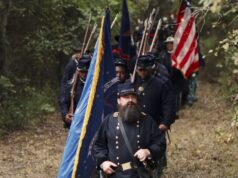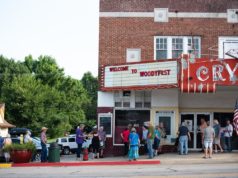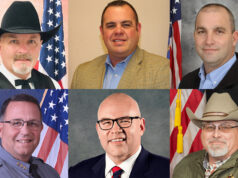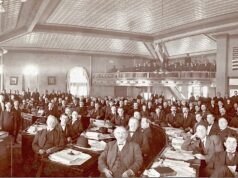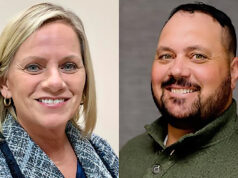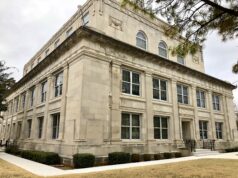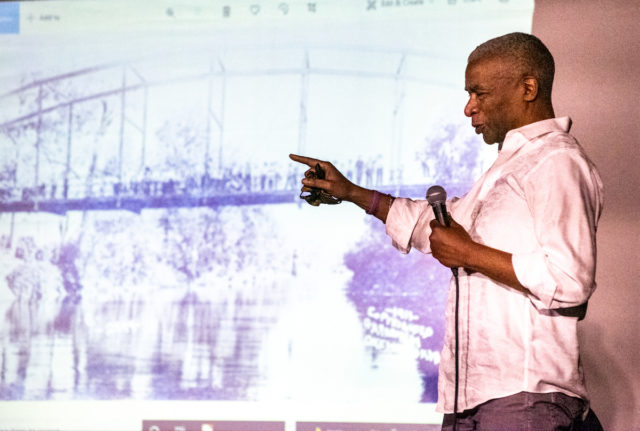

OKEMAH — The tragic story of Laura Nelson and her teenage son, L.D., took center stage last week at Okemah’s Crystal Theatre, a mere block from where they were grabbed by a white mob from the county jail in 1911, dragged out of town and lynched from a river bridge — with a photographer there to capture it all for a postcard.
The Nelson lynching stands as a dark part of Okemah’s history, but it also served as motivation for a song, Don’t Kill My Baby and My Son, written by legendary folk singer Woody Guthrie, who grew up seeing a postcard of the racial violence that happened in his hometown.
As a result, organizers of the 2021 Woody Guthrie Folk Festival, held in Okemah last week to commemorate the life and music of the town’s native son, believed it fitting to hold a panel discussion about the Nelson incident.
“The time has come to discuss these matters,” longtime festival announcer Roger Osburn said as he introduced the speakers at the Laura Nelson Project panel discussion Friday, July 16.
Details of the Nelson lynching
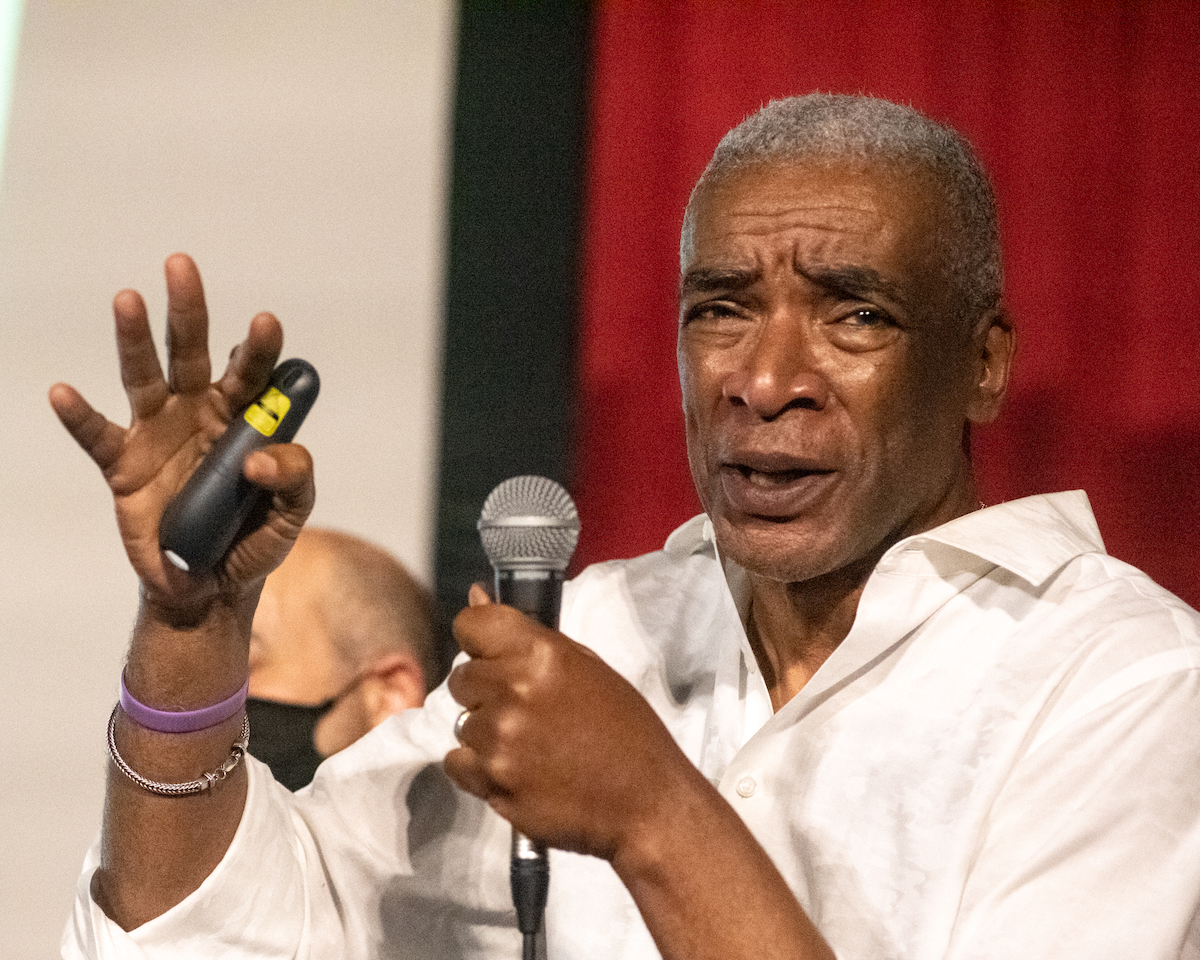
Nelson and her 16-year-old son, L.D., had been arrested in 1911 after a sheriff’s deputy investigating a cow theft was killed during a scuffle over a Winchester rifle at their Okfuskee County farm near Paden. Two weeks later, a white mob broke into the county jail in Okemah and took the mother, the teenager and an infant son to the North Canadian River bridge.
Laura and L.D. were lynched. The infant was left by the roadside. No one was prosecuted for the deaths.
Benjamin Bates, a retired Langston University English professor, led Friday’s panel discussion about the tragedy 110 years later.
“We don’t know whether it was an accident or what happened at the farm. But she was lynched. She didn’t deserve that,” Bates said. “Even if she was the worst person in the world, she didn’t deserve what she got.”
Bates said the Nelson lynching story had gnawed at him for years since he first saw a copy of the postcard picture that showed Laura and L.D. hanging from the river bridge, with members of the mob standing on the bridge as if posing for a Sunday school portrait. (Graphic photos of the Nelson lynching can be viewed here.)
Bates is now retired from Langston, but he has launched the Laura Nelson Project to bring awareness to the killing. He said the lynching was an “open secret,” meaning many in Okfuskee County know the lynching happened, but it wasn’t included in history books, and details of the circumstances are not well known.
“Right now, all we know about Laura Nelson was that she was hanged. That’s the end of her story,” Bates said. “I would like for there to be a better story than that — at least to know this injustice happened. We can reconcile ourselves by seeing that it is there and not pushing it under the rug any further and be open about it. That is what we are hoping to do, and we think it reconciles communities.”
Cameron University history professor W. Douglas Catterall, who presented the historical context of the lynching at the panel, said racial violence in eastern Oklahoma in the 1910s occurred at a time when the area was being settled. Farmers, including former slaves, were competing for land.
Catterall said more than 80 percent of Black farmers and an equal percentage of white farmers were sharecroppers who did not own the land they farmed. He said white farmers formed commercial clubs with the express purpose of excluding African-American farmers from access to land and economic betterment.
Okfuskee County History Center curator Luke Bryant said the Nelson lynching was photographed and published as a postcard to discourage Black migration into the area.
“The postcards were a message to the populations coming in. Okemah was very clear about the population they wanted here and the population they did not,” Bryant said, noting the nearby and prosperous all-Black town of Boley.
Bates said postcards promoting lynchings were prevalent through the South during the period. The photograph on the postcard of the Nelson lynching is believed to be the only known surviving photograph of a black female lynching victim.
“These kinds of postcards would have been circulated here in Okemah during Woody Guthrie’s childhood, and that might have inspired him to write the song, Don’t Kill My Baby and My Son,” Bates said.
He said historical research revealed that, after the Nelson lynching, white men feared a Black uprising from Boley citizens and formed an armed perimeter around Okemah.
“And [Boley residents] did not attack,” said Henrietta Hicks, a long-time Boley resident who participated in the panel discussion and has researched the Nelson family genealogy. “Do you think that the people of Boley in 1911 would come to Okemah, unarmed or only with a hoe or an axe, when Okemah had guns? Do you think they were that stupid?”
Hicks said the rumors about Black retaliation for the Nelson lynching were part of the fear campaign that had been established against the Black segment of the county.
Examining the first drafts of history
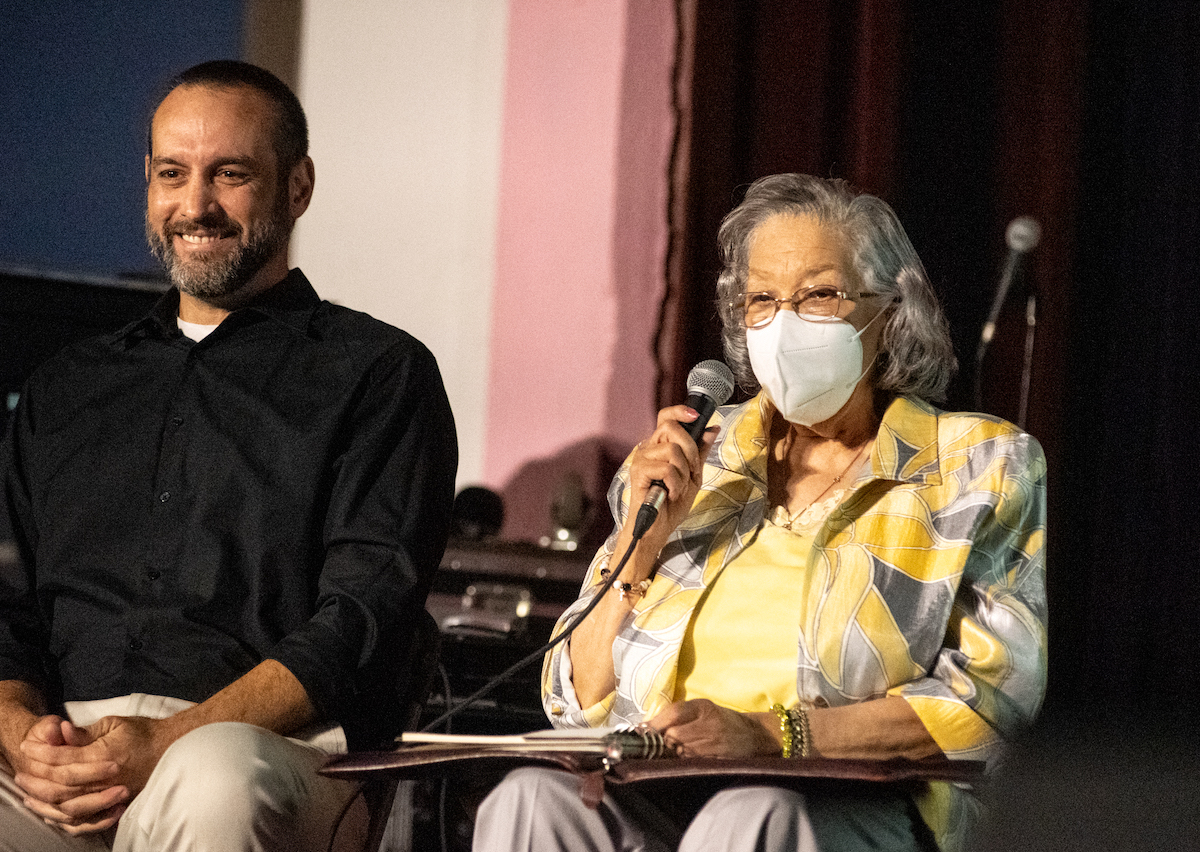
Bates noted that the lynching made headline news in Okemah at the time. But competing newspapers portrayed the incident differently.
The initial report from the Okemah Independent newspaper described a struggle over a firearm that accidentally discharged, sending a bullet past one officer and then into the leg of deputy George Loney, standing behind, causing a fatal wound.
But after the lynching, the Okemah Ledger described the incident in a way suggesting Laura Nelson gave her son L.D. the gun to shoot Loney. It said she was “very black” and “vicious.”
“In two weeks time, the incident went from an accident to a crime, and we also had a villain (…) to justify the lynching that had happened,” Bates said.
Woody Guthrie’s connection to the Nelson incident appears to be more than just a song, the researchers said.
Hicks said there is historical record, including an interview of a Guthrie family member, that placed Woody Guthrie’s father, Charley, in the mob. Hicks said the elder Guthrie was a prominent Okemah citizen in 1911 and was believed to be a member of the Ku Klux Klan.
Research by Bryant and Hicks also uncovered the likelihood that the Nelson’s infant son, who was believed abandoned near the bridge, was taken in by an Okemah family and lived there until adulthood.
His identity has not been confirmed, but Hicks said their investigation has given them a good idea of who the man, now deceased, may have been.
Bates said the panel discussion at the Woody Guthrie Festival was a first step in the Nelson Lynching Project to bring awareness.
Ultimately, he said, the goal is to gain recognition of the Nelson family in The Legacy Museum in Montgomery, Alabama, where the victims lynchings and racial injustices are memorialized.









